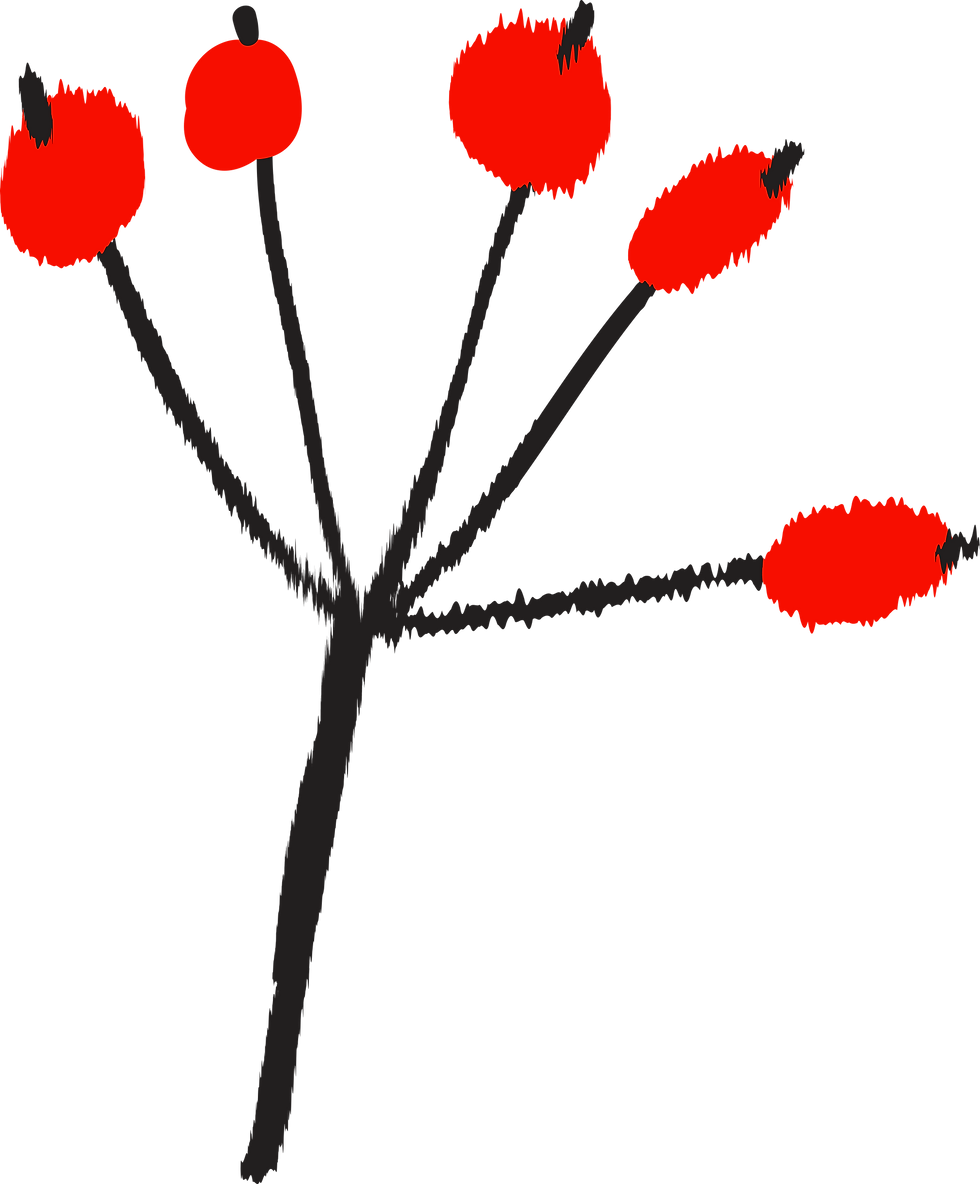Exploring Probabilities with Tree Diagrams: A Berry-Picking Journey
- Danielle Honeyands

- May 20, 2024
- 3 min read
Updated: Feb 12
Imagine you're strolling through a magical forest, where each tree represents a different set of possible outcomes. Each branch of these trees splits into further branches, leading you deeper into the forest, and at the end of each branch, there's a cluster of berries waiting to be collected. These berries symbolise the probabilities we encounter in various scenarios. By moving along the branches and collecting these berries, we can calculate the total probabilities of different events. Let's embark on this berry-picking journey to understand how tree diagrams help us work out probabilities.
The Trunk: Starting Point of Our Journey
Let’s begin with a simple scenario: flipping a coin. The trunk of our tree represents the start of this event. From this trunk, two branches emerge:
- Heads (H)
- Tails (T)
At the end of each branch, we have berries with the probabilities of these outcomes:
- The probability of getting Heads (P(H)) is 0.5.
- The probability of getting Tails (P(T)) is 0.5.

Branching Out: Adding More Events
Now, let's add another layer to our tree by flipping the coin a second time. Each of the initial branches (H and T) splits into two more branches, representing the outcomes of the second flip:
- From Heads:
- Heads (HH)
- Tails (HT)
- From Tails:
- Heads (TH)
- Tails (TT)
Each of these new branches carries berries with their own probabilities. Since each flip is independent, the probability of moving from one branch to the next remains 0.5.
To find the probability of any specific outcome, we multiply the probabilities along the branches leading to that outcome. Think of this as moving along the branch and multiplying the probabilities as you go, just like following a path to collect berries:
- P(HH) = P(H) * P(H) = 0.5 * 0.5 = 0.25
- P(HT) = P(H) * P(T) = 0.5 * 0.5 = 0.25
- P(TH) = P(T) * P(H) = 0.5 * 0.5 = 0.25
- P(TT) = P(T) * P(T) = 0.5 * 0.5 = 0.25
Thus, each berry at the end of the branches (HH, HT, TH, TT) represents a probability of 0.25.
Collecting the Berries: Summing Probabilities
To determine the probability of a more general event, such as getting exactly one head in two flips, we gather the relevant berries from the branches:
- One head (HT or TH):
- P(HT) + P(TH) = 0.25 + 0.25 = 0.5
So, the probability of getting exactly one head in two flips is 0.5.

Expanding the Forest: More Complex Scenarios
Tree diagrams are especially useful for visualising and calculating probabilities in more complex scenarios. Let’s consider rolling a die and then flipping a coin. The tree diagram starts with six branches, each representing one outcome of the die (1, 2, 3, 4, 5, 6), each with a probability of 1/6. From each of these branches, two more branches represent the coin flip (H, T), each with a probability of 0.5.
To find the probability of rolling an even number and then flipping heads, we look at the relevant branches and multiply the probabilities along each path:
- Even numbers: 2, 4, 6
- P(2H) = (1/6) * 0.5 = 1/12
- P(4H) = (1/6) * 0.5 = 1/12
- P(6H) = (1/6) * 0.5 = 1/12
Adding these probabilities gives us:
- P(Even and Heads) = 1/12 + 1/12 + 1/12 = 3/12 = 1/4
So, the probability of rolling an even number and then flipping heads is 1/4.

Conclusion: A Berry-ful Understanding
Tree diagrams are powerful tools that visually guide us through the process of calculating probabilities. By treating each branch as a path and multiplying the probabilities along these paths, we can intuitively determine the likelihood of various outcomes. Just as collecting berries along a forest path, we sum the probabilities at the ends of the branches to find our final answers.
Next time you face a probability problem, visualise it as a tree in a forest. Draw your tree diagram, follow the branches, multiply the probabilities, and collect the berries to enjoy the sweet fruits of your calculations!




Comments